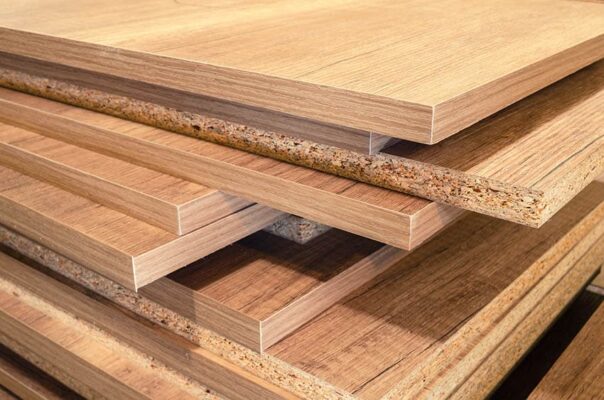When selecting materials for furniture or home construction, you’ll often need to decide between manufactured wood and solid wood.
Not worry; this problem is not just yours, even those who have been in the profession for many years, sometimes have difficulty in making a decision before choosing these two types of wood.
So, which is better: manufactured wood or solid wood?
Both types of wood have their own unique benefits and drawbacks. While solid wood is well-known and has been used since ancient times, manufactured wood might not be as familiar to everyone. To answer this question, it’s important to understand the differences between the two.
Table of Contents
What is Solid Wood?
Solid wood is natural lumber that we cut directly from trees. It has been used for centuries in construction and furniture making. Examples of solid wood include oak, maple, cherry, and walnut. Solid wood is known for its durability, beauty, and strength. Based on origin and growth, solid lumber can be divided into two major types: hardwood and softwood.

The easiest way to identify natural wood is through its distinctive and beautiful grain pattern. Solid wood is famous for its durability and strength, often exhibiting excellent resistance to moisture, insects, and decay. Additionally, wood can be identified by its color, which varies from light yellow to dark brown or red, depending on the species. Due to the non-renewable nature of solid wood harvested from natural forests, it tends to be more expensive.
What is Manufactured Wood?
Engineered or manufactured wood is a product designed to resemble natural wood, but it’s made in factories or laboratories rather than being directly harvested from trees. This is an alternative to natural wood at a cheaper cost.
Common examples of manufactured wood include plywood, HDF (high-density fiberboard), particleboard, veneered board, and MDF (medium-density fiberboard). These materials are easily available and more affordable.

Manufactured wood is made by combining multiple materials, such as wood particles, veneers, fibers, and thin wood boards. This type of wood is commonly used in various cost-effective woodworking projects, including furniture, plywood, windows, doors, desks, kitchens, bookshelves, and wardrobes. The surfaces of these products are often covered with solid wood layers or veneers to give them a more natural appearance. Manufactured wood is generally water-resistant, easy to clean, and easy to work with. Specifically, veneered boards have natural wood veneers on their surfaces, giving them the look and feel of real wood.
Solid wood and manufacture wood: What’s the differences?
| Point/Term | Solid Wood | Manufactured Wood |
| Definition | Natural wood cut directly from trees. | Engineered wood made by binding pieces of wood together |
| Origin | Used for centuries, sourced from natural forests. | Commonly used in the 20th century to utilize wood waste. |
| Durability | Very durable, especially hardwoods like oak. | Durable but varies by type; generally less durable than solid wood. |
| Grain Patterns | Natural and unique patterns, different in each. | Little difference; often covered with veneers to mimic natural wood. |
| Aroma | Has a natural wood scent, which can be pleasant. | No natural fragrance, any smell comes from adhesives or finishes and harmful to the body |
| Cost | More expensive due to quality and limited supply. | Cheaper due to efficient use of materials and mass production. |
Conclusion
Both solid wood and manufactured wood have their own benefits in home improvement and furniture making. Solid wood is incredibly durable, beautiful, and valuable, but it is more expensive and needs more maintenance. Manufactured wood is cheaper, versatile, and stable, which makes it great for many uses.
In the end, choosing between solid wood and manufactured wood depends on what is the goal of the project. By knowing the pros and cons of each type, you will have an overview and make the correct choice.
Most of the furniture and objects we see and use today are made from composite wood because of its affordability and accessibility. However, if you value the durability and natural beauty of wood grain, solid wood is the choice for you. At K-Timbers, we offer African solid woods at affordable prices. So please take some time to review our products on the website, and don’t hesitate to contact us if you have any questions that need answering.



![[K-Timber] Blog Post Boder (1)](https://k-timbers.com/wp-content/uploads/2024/06/K-Timber-Blog-Post-Boder-1.jpg)






